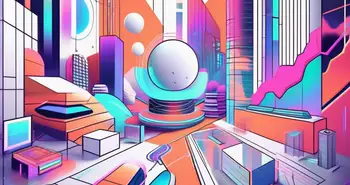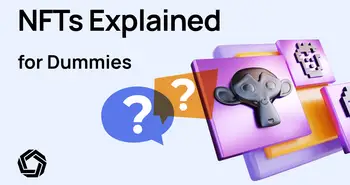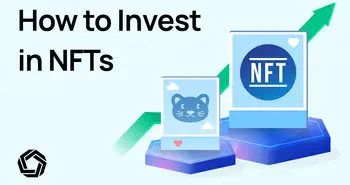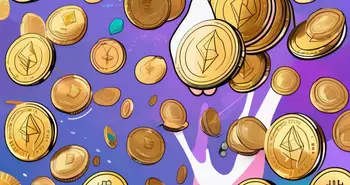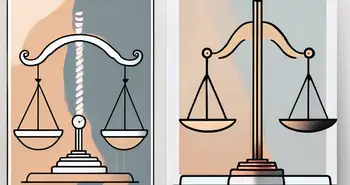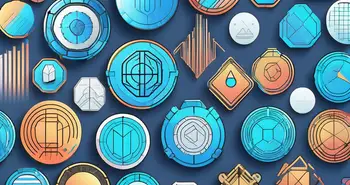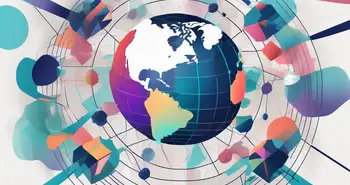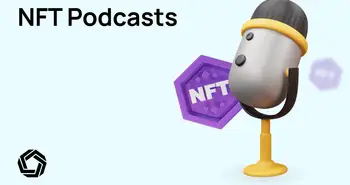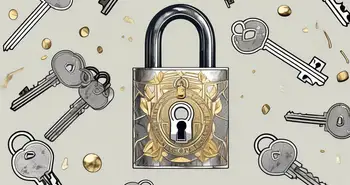NFT Use Cases: Beyond Digital Art

NFTs – cute JPEG pictures of Kitties and Dragons? For most people, that is the first thought when the three letters are mentioned. Yes, sometimes NFTs can be just cute pictures, but that is just the tip of the iceberg of the vast applications of Non-Fungible Tokens (NFTs).
In this article, we will go beyond cute JPEGs and see how NFTs better the world and how they ought to disrupt multiple industries. We will go beyond digital art into Gaming, Music, Access, Redeemables, Identity and other use cases.
To skip the long explanation for dummies, simply try not to relate NFTs to art straight away. Think broader. NFTs are digital property rights first and foremost. They allow you to prove authenticity and verifiable ownership online. But why is that important?
Authenticity goes a long way with rich people. No one wants to pay $450M for a replica or copy of the Salvator Mundi painting, but for the authentic painting – people with money will.

Verifiable ownership has not existed in the same way it now does with NFTs. With verifiable ownership ensured by the blockchain, you can truly assess the owner of the digital good. Through this breakthrough, every creator can earn fair royalties, enabling a true creator economy.
“NFTs are a way to own a unique digital item. Today it’s mostly digital visual art, but they can—and will—apply to anything digital: music, writing, video game items, and more. NFTs have authenticity because creators sign them digitally, similarly to how an artist would sign a physical painting.”
So, the actual craze and huge investments in NFTs are not only about digital art but rather about their potential. Even if we just take the physical art market that is worth a bit more than a trillion dollars, NFTs currently only make up around 1% of it. A lot of potential lies in disrupting these huge industries and thus a lot of investment flows in this sector. Sure, there will be some people who profit a lot from this transformation, like Beeple, who sold his art for $69M and some who will make investments that will fail, perhaps, like Justin Bieber, who bought a Bored Ape NFT for $1.3M and it fell to only $69k a year later. Given its novelty, pricing NFTs is not so straightforward! We need multiple trials over some time to figure out how to invest in NFTs.

“It’s worth acknowledging how early NFTs are as a new form factor. Just like it took lots of people trying to make different kinds of websites in the early internet, it will take a lot of experimentation with NFTs.”- Fred Ehrsam
Benefits of NFTs
Global Opportunities
NFTs allow any artist, irrespective of their location on earth, to have a fair chance at connecting with an international audience. When we talk about the biggest economies in the world, people tend to think it is the US or China, but it is the Internet. With moving art into digital space, there are almost no geographical restrictions, the disadvantaged suddenly get a playing field that is more evenly distributed. Everyone with an Internet connection can participate in the Internet economy as a creator and earn their fair share of the revenue.
Fair Artist Payment
Unlike traditional art markets where intermediaries keep most profits from sales while denying artists fair compensation for their work. Digital platforms like Opensea are changing this dynamic by allowing creators to receive a majority share of the revenue while they take only a 2.5% transaction fee. As some say, the first Internet (web 1) was about reading from the Internet. Currently, we are in the era of Web 2, where you can read and write (create content and post it) on the Internet. However, big companies like Google and Meta collect a huge chunk of the advertising revenue. The difference between Web 2 to Web 3 is that creators can actually read, write and earn. This transition we are currently in will create entirely new dynamics for the internet, and NFTs are a big enabler of that.
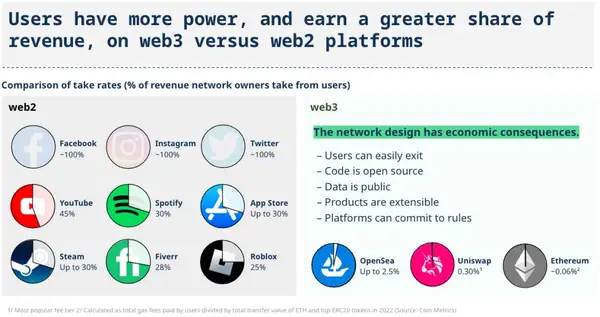
For example: When selling art as an NFT, smart contracts automatically award royalties to creators every time someone resells it, fostering long-term financial security for artists and creatives alike. In short, there are fewer middlemen involved that previously facilitated the tasks of selling and authenticating before. By getting rid of middlemen such as auction houses or dealerships, we reduce transaction costs and increase profitability. For instance, Tom Fry -an artist- earns 10% each time his artwork is sold.
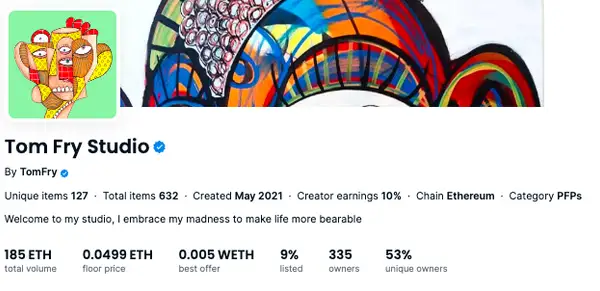
More Transparency
Because all information about ownership and history is transparently recorded on blockchain technology used by NFTs, authenticity concerns related to potential fraud or piracy within conventional art sectors are put at ease.
Also, another promising aspect about venturing into digital collectibles beyond trading just standard artwork-Nfts holds out verifiable ownership, helping establish value due to inherent scarcity factor.
Collectibles and Memorabilia
NFTs have extended beyond art and are being used to create and trade digital collectibles and memorabilia. These can include limited-edition trading cards, virtual items in video games, virtual real estate, and other unique digital assets. NFTs provide verifiable ownership and scarcity, enhancing the value of these collectibles.
“It was sort of a part of my identity. It was a mask. What are masks? They’re objects that you can project identity onto. And for 7804, the wise alien, I felt a bit different wearing it. And as soon as I sold it, it didn’t feel right to wear it anymore. And so I had to take it off. And now the person that’s wearing it, I’m like, “Wow, you are totally the wise alien, this is perfect.” But I definitely did feel very emotional about it. I felt extremely attached to it. It felt like a breakup to have sold it. I literally had dreams about it.”
This paradox of ownership is the ultimate challenge for any collector. We often hear, “Why are Cryptopunks so expensive?”. Here is the answer. As more people become invested in their tribe’s success, the PFP becomes a symbol of one’s identity and, therefore, less likely to be sold. This has clearly proven as we quickly found celebrities like Jay-Z, Snoop Dogg, Serena Williams, Justin Bieber among the owners of CryptoPunks, it’s easy to see why many want to be part of one of the first NFT art projects.
Tokenization of Real-World Assets
NFTs can represent ownership rights to physical assets, such as real estate, luxury goods, or even fractional ownership in tangible items. By tokenizing these assets, NFTs enable fractional ownership, increased liquidity, and ease of transfer. For example, this would even enable us to trade real-world objects like stocks.

Popular Use Cases for NFTs
Well, now we know about the benefits, but what about the actual use cases of NFTs? This section will talk all about it, from more obvious and famous applications such as gaming, or fashion to areas like identity management or access. At the end of this section, we will even show you how all of the different use cases might be combined to create never seen before user-experiences and products in a real-world case study.
Gaming
The gaming world has an intriguing financial dynamic where players invest billions annually in virtual commodities. These items differ from game to game, from in-game currency to unlocking new characters or getting a rare item. In fact, these are perhaps the most sought-after items in online games ever, reaching prices of thousands of dollars: “Teebu's Blazing Longsword” in World of Warcraft, the “AWP | Dragon Lore” skin in Counter-Strike, or the “TOTY Icon Ronaldinho” in FIFA. There is one small problem with this; though, gamers don't possess these items. The control remains entrenched with the gaming companies that restrict transferability between games and stifles innovation.
With Non-Fungible Tokens (NFTs) invasion into Web3's video game verse, the power dynamics might change. It feels like a quiet uproar as NFTs bestow actual ownership of in-game assets to users instead of corporate entities—a dramatic shift enabling gamers to express absolute sovereignty over their virtual loot. Trailblazing franchises such as Axie Infinity or Decentraland have demonstrated glimpses of unveiling the potential embedded within NFT infused-gaming.
Stepping stones towards advancement in numerous tech arenas: interoperability and composibility now gaze upon revolutionizing Web 3 gameplay too! Assuming NFT expression within game objects paves the way for crisscross interaction across various games, driving user engagement coupled with a sense of commandment that was previously unheard of!
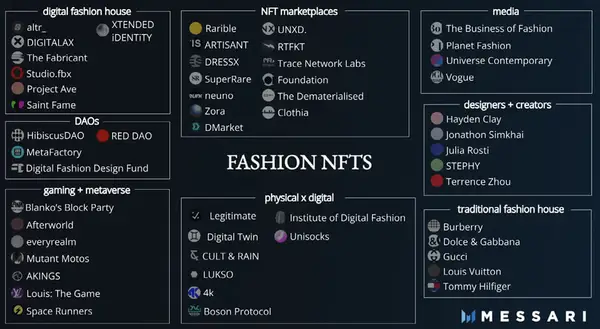
Web 3-based game inventions are surprisingly reversing typical norms by revolving around player-owned gadgetries rather than traditional company-driven controls.
Projects have emerged that try to give the gamer control over their in-game items. One of these projects is Loot NFTs, a collection of 8,000 unique tokens represented as simple images of white text on a black background. Each Loot NFT represents a “bag” filled with eight pieces of randomized adventuring gear, such as weapons and armor.
Loot NFTs were released in August 2021 without predefined purposes or set rules, leaving it up to the imagination of the community to determine how the game should be played. While the items listed on the Loot NFTs lack stats or images, they sparked the creativity of the Loot community, empowering them to build their own game system around these items. As a result, the community has developed an array of tools, maps, characters, and additional NFTs that complement the original Loot (for Adventurers) collection.
Redeemables
The next use-case for NFT that deserves more attention is about redeemables. Redeemables were first pioneered by Unisocks, where a token can be exchanged for a physical good. This mechanism holds the potential to find applicability across a wide range of offline goods. It is about seamless integration between the physical and digital domains.
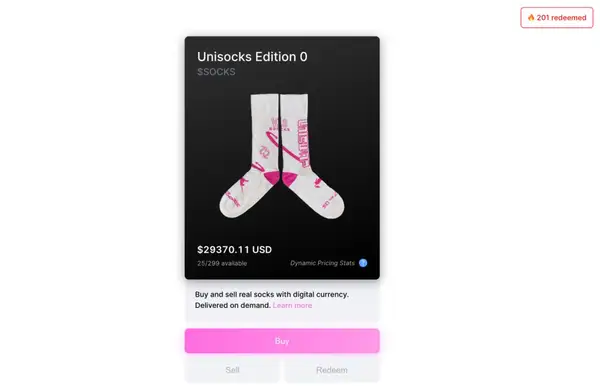
Usually, high-value collectors find it challenging to properly display or access their valued collectibles which often reside in hidden Safes or vaults due to safety concerns. With ‘redeemable' NFTs these items can now exist as digital tokens simplifying showcasing. It is also remarkable that you can not only showcase your items but also make them available for trade directly to a global audience.
Obviously, the Socks were just a project to showcase the possibilities, but soon many collectibles will follow. You can put any physical object on the blockchain and sort of tokenize it to make it accessible online. This integration bridges the physical-digital gap and introduces novel ways for interaction and commerce. The result would be even easier digital commerce, perhaps even resulting in more trade.
Identity
The Web 2 approach to handling personal information highlights its susceptibility to hacking and misuse. The conventional method of managing sensitive data, including passwords, has proven to be inadequate and vulnerable to security breaches. We learned several years ago that the NSA was spying on Americans and lying to its oversight committee. Edward Snowden still hasn’t been pardoned, and the surveillance state is more tightly merged with social networks and search engines than ever before. Similar developments are taking place overseas, especially in China.
Blockchain, such as Bitcoin and Ethereum, on the other hand, have proven their solidity in terms of security. By large, the blockchains themselves remained adamantine against invasive hacking endeavors. The current is shifting with Web 3; it moves the control of the data back to the user. Users are able to own their unique data and not rely on the singular huge databases of governments or corporations like Google and Meta. So by decentralizing Identity options, we can reduce the risk and vulnerability towards hacking and unauthorized entry.
A commendable advantage coming alongside Web 3 is an elevated level of logging-in methods along with safer means for self-identification. Proposals like http://login.xyz or Ethereum Name Service (ENS) present users avenues allowing interoperability for validating identity—a pledge towards increased safety measures and user influence.
Looking ahead into our timeline, prospects brought forth by Web 3 could involve the usage of Non-Fungible Tokens (NFTs) for one's identity management. NFTs can facilitate secure storage and selective disclosure of various identity-related records, credentials, and reputation data, offering a decentralized and tamper-resistant approach.
Access
NFTs also make ticketing seamless and easy. It is a low-friction way to handle ticketing for various different events, memberships, drops and much more. NFTs find native applications in digital access scenarios. Private Discord servers, video lessons, and other exclusive content can be securely managed using NFTs. These tokens serve as digital keys, granting authorized users access to restricted spaces, courses, or premium content. Each Non-Fungible Token (NFT) has unique characteristics. You get uniqueness, indivisibility, and unquestionable rightful ownership. These inherent traits align perfectly with managing accessibility across a spectrum of access needs.
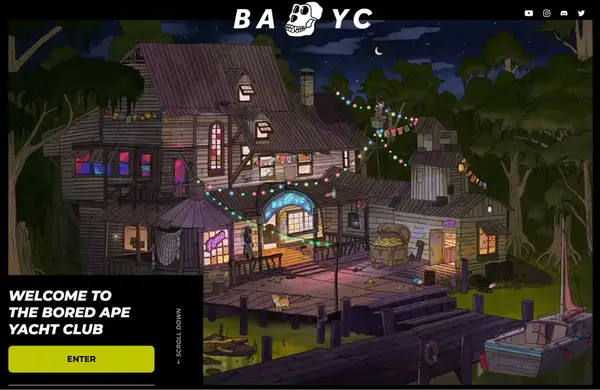
You can also easily combine NFTs with other elements, such as proof-of-attendance, as you only give an NFT to a person that has actually showed up to the event or to the online lecture. With this, you can then reward the most loyal customers or fans that have the most “proof-of-attendance” NFTs with certain exclusive events or presents. Especially as the internet gets spammed with AI content more and more, access will become more important. No one wants to hang out in an online space full of spam and information flood, the real conversations will be held in private discords and communities only accessible with certain NFTs.
Another application would be to have on-chain resumes or so-called crypto credentials that would instantly qualify you for a global job market and with which you can log into any site. Listen to Balaji Srinivasan explaining the concept of NFTs of Cryptocredentials even closer.
“A limited NFT collection where the token itself doubles as your membership to a swamp club for apes. The club is open! Ape in with us.”
Fashion
Above, we showed many singular applications – now let's talk more about something like a case study. We will talk about how Fashion combines many of the aspects above. For this example, we will take RTFKT. This company uses NFTs to manage access to certain collections they create with brands like Nike or Rimova. They can control the distribution of the collections by assessing your identity and eligibility. Finally, you can redeem real-world pieces or in-game artifacts by buying or minting certain NFT collections.
“We are a creator led organisation. RTFKT uses the latest in game engines, NFT, blockchain authentication and augmented reality, combined with manufacturing expertise to create one of a kind sneakers and digital artifacts.”
For example, you are able to first buy an NFT for a limited drop. Once you have done that, you are eligible to redeem and buy the exclusive item, giving you online and physical ownership rights.
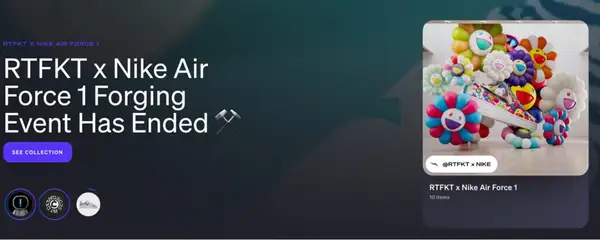
Later, you can decide what you want to do with your sneaker NFT. You can sell it to someone else for a higher price so that the person can redeem it, or you can also decide only to use it online across different platforms. By owning the rights to that specific item, only you can have in-game access across platforms. Here is a great example where you can actually use the filter of these sneakers on Snapchat.

Pretty cool, right?
This concept can obviously also be extended to things like digital property in virtual worlds or almost every item in the real world that needs to have a certain verifiable scarcity and authenticity.
Challenges to Mainstream Adoption of NFTs
Through a false media narrative, some people started believing that there are environmental concerns with NFTs. This myth is quickly refuted as most NFTs operate under the ERC-720 contract and thus on the Ethereum Blockchain. Therefore, the concern might lie with operating the Ethereum Blockchain. However, after the Ethereum Blockchain switched from proof-of-work to proof-of-stake, it reduced its energy consumption by 99%. Hence, it consumes an incredibly small amount that does not pose any serious environmental concern.
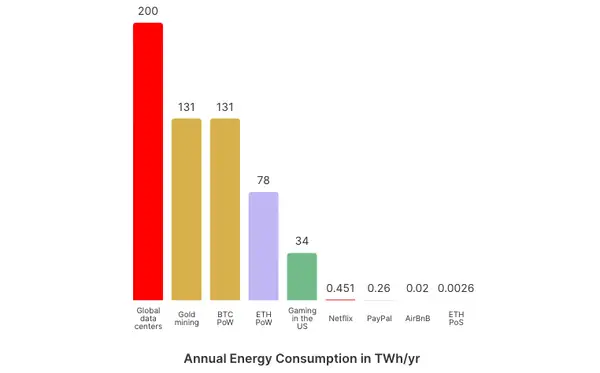
From a legal and regulatory perspective, NFTs should also not pose a big issue, as they actually allow for a truthful cryptographic verification of digital property, making many laws obsolete. Other concerns stem from the fact that NFTs will never get adopted into the mainstream. That they are just too complicated and not useable for the average person. Also that they are perceived as worthless because anyone can right-click and save them. The argument is this: if you can duplicate something at no cost, it's worth nothing.
Some say NFTs are scams spun from internet hype to snatch money. But almost everything that is new faces certain criticism. Didn't the Internet face doubts when it was just starting? Look at how vital it has become in our lives now!
New tech always faces skepticism early on. It is the first thing old people do; they critizise because they do not understand it. The same goes for NFTs and probably blockchain in general, but the more you interact with it, the more you try, the more it becomes obvious why it is superior to our current Web 2 alternative. As an innovator and investor, Chris Dixon said about Web 3:
“Things that look interesting to smart people usually do so because they are rich with product possibilities. These possibilities eventually become reality. Toys become must-have tools. Weekend hobbies become mainstream activities. Cynics sound smart but optimists build the future.”
Chris Dixon
Conclusion
Bravo for navigating to the conclusion. Unquestionably, you've acquired a wealth of new insights and now discern NFTs comprise more than delightful pixels in JPEG form. You will now be able to pierce through the marketing noise. NFTs have found their applications in diverse sectors, from gaming and music to identity management and culture. They have revolutionized the concept of a fairer creator economy. NFT are providing artists and creators new avenues for monetization and ownership of their work. With all aspects of NFTs combined, completely new product experiences can be created, as seen in the great example of RFTKT.

Disclaimer: All investments involve risk, and the past performance of a security, industry, sector, market, financial product, trading strategy, or individual’s trading does not guarantee future results or returns. Investors are fully responsible for any investment decisions they make. Such decisions should be based solely on an evaluation of their financial circumstances, investment objectives, risk tolerance, and liquidity needs. This post does not constitute investment advice.

Painless trading for everyone
Hundreds of markets all in one place - Apple, Bitcoin, Gold, Watches, NFTs, Sneakers and so much more.

Painless trading for everyone
Hundreds of markets all in one place - Apple, Bitcoin, Gold, Watches, NFTs, Sneakers and so much more.

